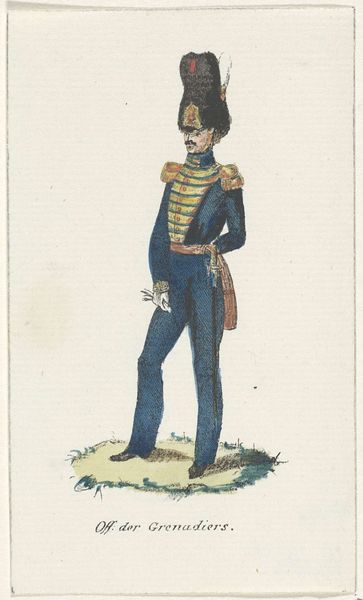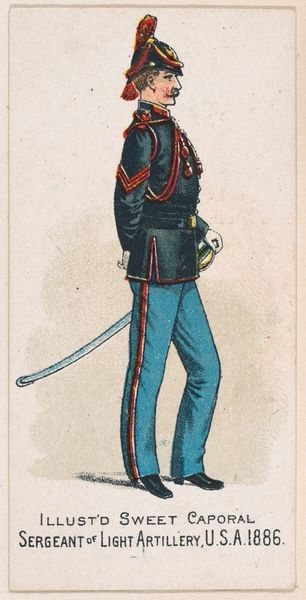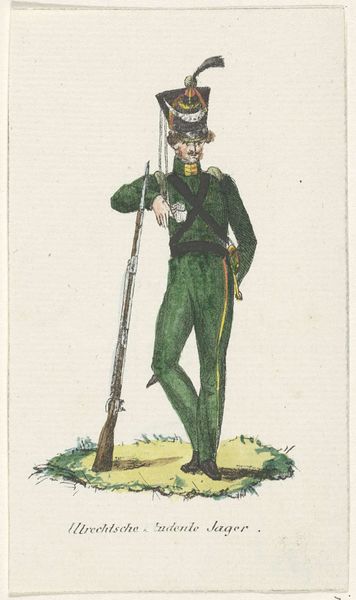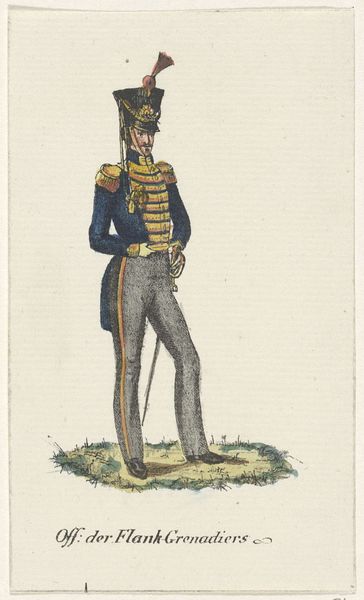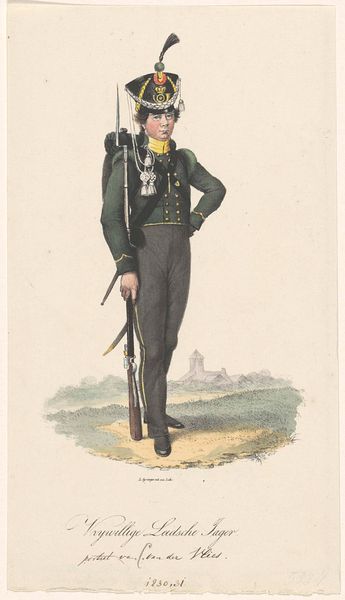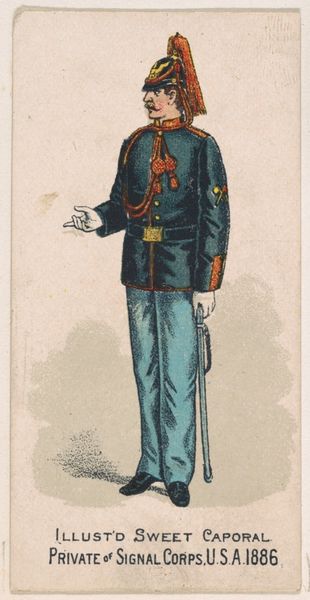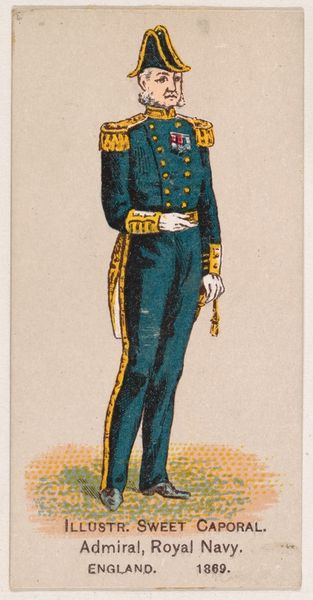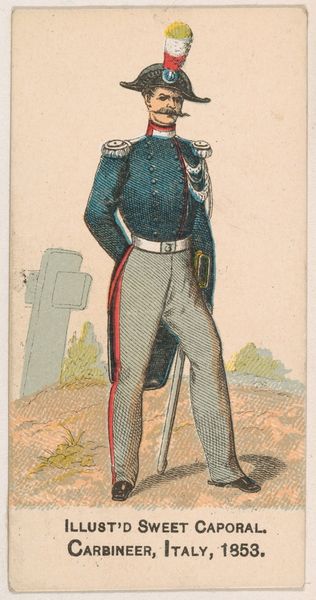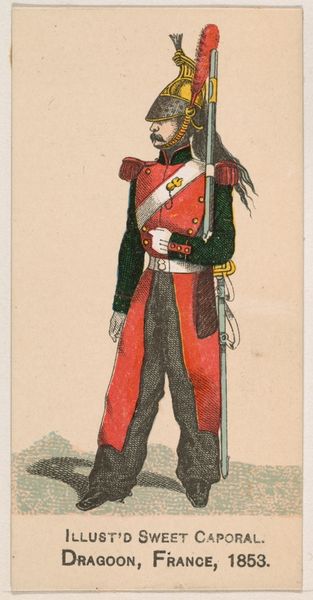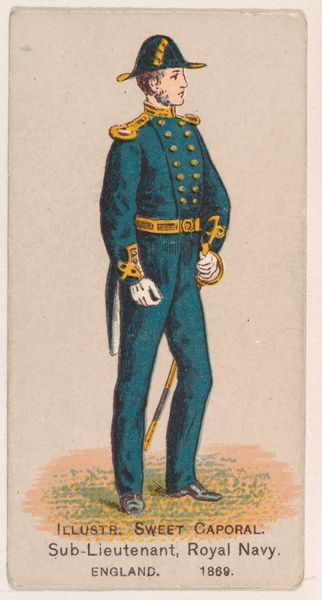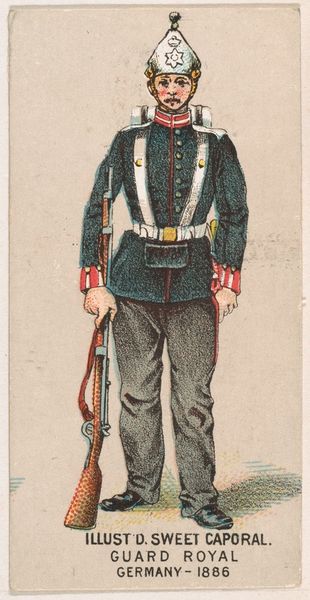
drawing, watercolor
#
portrait
#
drawing
#
watercolor
#
romanticism
#
costume
#
sketchbook drawing
#
watercolour illustration
#
genre-painting
Dimensions: height 113 mm, width 68 mm
Copyright: Rijks Museum: Open Domain
Curator: Allow me to introduce "Officier van de Leidse studenten," dating from 1830-1835, currently housed at the Rijksmuseum. Editor: My first thought is "austere." There’s something very linear and regimented about the composition, and that palette of green… intense. Curator: This watercolor drawing provides a glimpse into the social and political dynamics of student life in Leiden during that period. Notice the detailed rendering of the uniform—it’s not just fabric; it represents identity and belonging. Student corps were closely linked with political movements. Editor: Indeed, the detail is striking. Look at the subtle tonal variations in the green, creating depth and volume despite the sketch-like quality. It is visually rich! The way the light catches the epaulettes is particularly effective. Curator: Consider the broader context of genre-painting at the time. The painting captures this ideal of the officer as a symbol of masculine authority. This particular image seems like a commentary of class, education and expectations. Editor: Do you think so? I'm drawn to how the artist used the watercolor to describe textures - fabric, metal, feathers. He focused on delineating those textures carefully rather than, say, the expression on the student's face. Curator: Perhaps both readings are valid. I also consider how the drawing captures a moment of societal tension, where traditional hierarchies were being challenged, this officer class was beginning to be viewed differently, even satirized. The rise of Romanticism gave way to the Biedermeier era, where traditionalism prevailed but was not without its opponents. Editor: And yet, the overall structure presents a formal, balanced composition. The figure stands almost centrally. There is this careful control and order... Curator: Understanding that these artifacts offer insight into how power was perceived and embodied. Editor: Absolutely, and analyzing these forms enhances our appreciation. Curator: Precisely. There is always room to discover fresh perspective. Editor: A successful interpretation comes through sustained observations of the artwork and engagement with it!
Comments
No comments
Be the first to comment and join the conversation on the ultimate creative platform.
